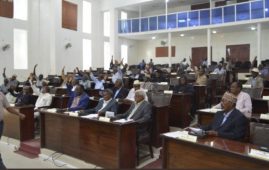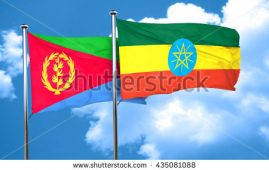Last week, the Obama administration released its international affairs budget request for fiscal 2014. Amid fiscal constraints in Washington, the budget request’s topline figure of $52 billion would maintain U.S. international affairs spending at roughly the same levels as in fiscal 2013 after sequestration. The administration’s proposed 2014 international affairs budget, which also calls for a sweeping overhaul of U.S. food aid, has been mostly welcomed by the U.S. aid community.
Yet while the administration’s budget request would keep overall U.S. international affairs spending largely intact, a Devex analysis reveals that the majority of U.S. bilateral aid programs have actually been slated for cuts in fiscal 2014. Under the request, 58 of 100 U.S. bilateral aid programs would see their budgets slashed, compared with fiscal 2012 levels. (Our tally of U.S. bilateral aid flows, which is based on account-level data available prior to the full release of the State Department and U.S. Agency for International Development’s congressional budget justification, has deliberately excluded international security assistance.)
East Asia and the Pacific is the only region where most U.S. bilateral aid programs are likely to expand in fiscal 2014. In fact, only five of 13 U.S. bilateral assistance programs in East Asia and the Pacific are expected to operate with diminished budgets next year. In an effort to reassert U.S. influence in the region, U.S. President Barack Obama has pledged to intensify his administration’s engagement in East Asia and the Pacific.
In the Middle East and North Africa – the region which has historically received the largest share of U.S. international affairs spending – eight of 10 U.S. bilateral aid programs have been slated for cuts in fiscal 2014. However, in its budget request, the Obama administration does set aside $580 million in additional assistance to the region through the Middle East and North Africa Incentive Fund. The fund, which failed to garner backing from Congress for fiscal 2013, aims to support countries in the region undertaking political and economic reforms.
Meanwhile, following the Obama administration’s rollout last year of its strategy for enhanced engagement toward sub-Saharan Africa, 17 of 34 U.S. bilateral aid programs in the region are expected to operate with smaller budgets in fiscal 2014. The administration has announced that it is increasingly refocusing its efforts in sub-Saharan Africa from aid to trade.
Read more at: Devex.com – “Which countries are winners and losers in Obama’s 2014 aid budget?” (April 15, 2013)
***********
The news didn’t elaborate the impact on the Horn of Africa countries, except South Sudan. However, it published indicating the changes compared to fiscal year 2012.
See below Devex’s map which provides a highlight of the impact on funding levels for U.S. bilateral aid programs).
********







Reblogged this on Allana Potash Blog.